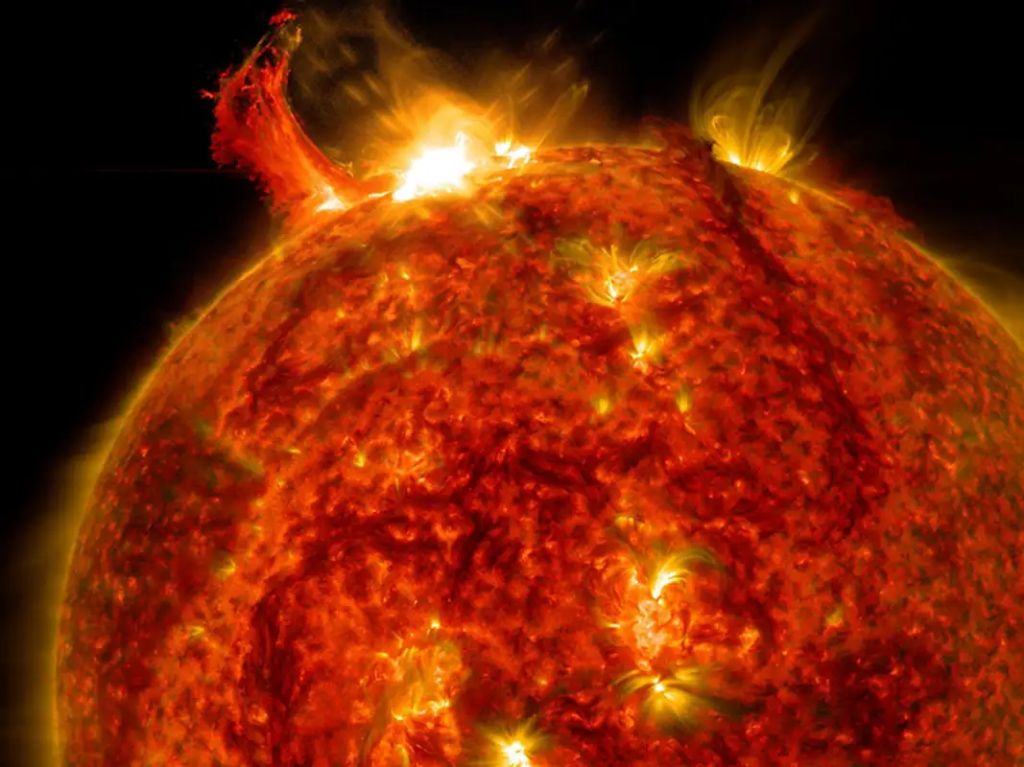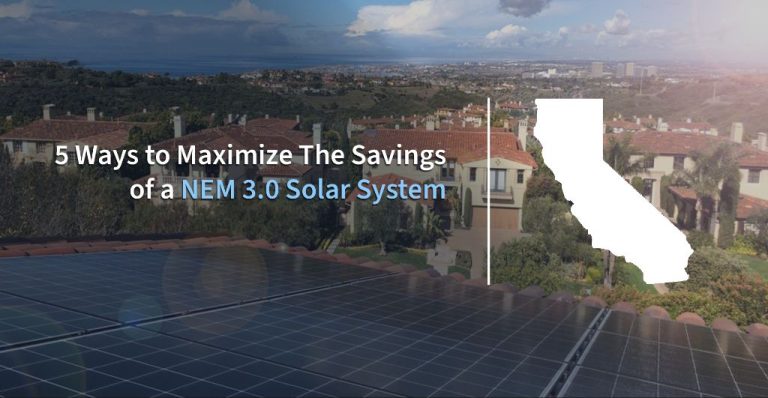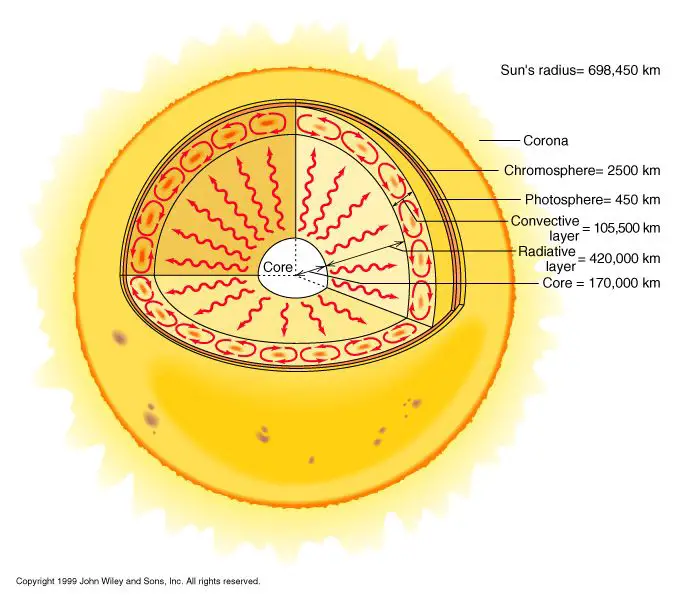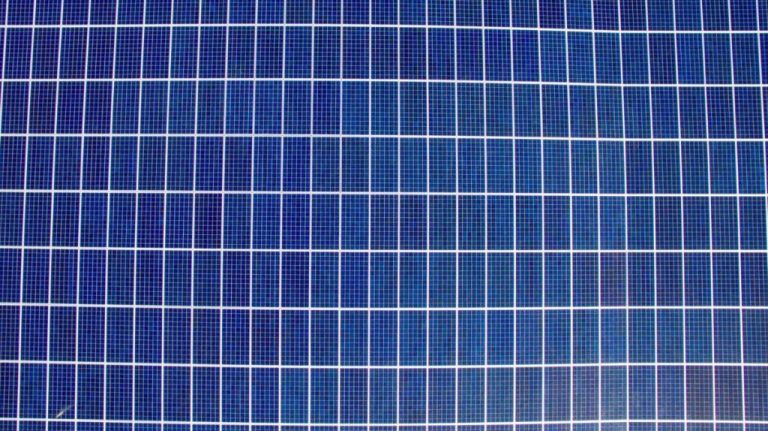How Strong Is Solar Radiation?
Solar radiation is the radiant energy emitted by the Sun in the form of electromagnetic waves. Understanding the strength and variability of solar radiation is important for several reasons. First, solar radiation powers life on Earth by providing the energy that drives photosynthesis in plants and phytoplankton. The amount of solar radiation reaching the Earth’s surface determines the climate and weather patterns. Solar radiation also produces the ionosphere in the upper atmosphere, which impacts radio communications. Additionally, solar radiation can damage satellites, disrupt power grids, and threaten astronaut safety. Quantifying solar output is key for applications like solar power and modeling Earth’s energy budget and climate system (An Introduction to Solar Radiation, Introduction to Solar Radiation).
Measuring Solar Radiation
Solar radiation is measured using instruments called pyranometers or pyrheliometers. Pyranometers measure global solar radiation, or the total amount of solar radiation across all wavelengths reaching a horizontal surface on Earth. They are usually mounted in a horizontal position and measure radiation in watts per square meter (W/m2). Pyrheliometers are pointed directly at the sun and measure only direct beam radiation in watts per square meter (W/m2) (source).
Another unit used to measure solar radiation is Sun hours. One Sun hour is equal to 1000 W/m2 of solar radiation. So if a location receives 5 Sun hours of radiation in a day, it received 5000 W/m2 that day. Measuring radiation in Sun hours accounts for variability and allows comparisons between locations (source).
Specialized instruments like pyrheliometers and pyranometers are needed to get accurate measurements, as solar radiation spans a wide spectrum of wavelengths. These sensors are calibrated and temperature-compensated to account for different environmental conditions (source).
Solar Constant
The solar constant is defined as the amount of solar radiation energy that reaches Earth’s atmosphere from the Sun per unit time and area. It represents the intensity of solar radiation incident at the top of Earth’s atmosphere when the distance between the Sun and Earth is one astronomical unit (AU), or about 150 million kilometers (93 million miles) (1).
The current accepted value of the solar constant is approximately 1,361 watts per square meter (W/m2). This value was determined based on satellite measurements and accounts for all types of solar radiation, including infrared, visible light, and ultraviolet. Variations in the Sun’s output cause the solar constant to fluctuate by about 6.9% throughout the 11-year solar cycle (2).
The concept of the solar constant is important for calculating the amount of solar energy Earth receives and modeling Earth’s energy budget and climate system. While not perfectly constant, it provides a standard baseline value for incoming solar radiation when Earth is at an average distance from the Sun.

(2) What is the Solar Constant?
Variability
The amount of solar radiation that reaches Earth’s surface varies based on factors like location, time of day, season, and weather. Solar radiation decreases with increasing latitude because sunlight strikes the Earth’s surface at an increasingly oblique angle as you move away from the equator. At the equator, the sun’s rays strike Earth’s surface more directly resulting in greater intensity of solar radiation. The poles receive the least direct sunlight and solar radiation.
The amount of solar radiation also varies with the time of day and season of the year. The sun is highest in the sky around noon so solar radiation is most intense at midday. Solar radiation varies seasonally because of the tilt of Earth’s axis. When the Northern Hemisphere is tilted toward the sun during summer, sunlight strikes this part of Earth more directly increasing solar radiation. In winter, the Northern Hemisphere is tilted away resulting in less direct sunlight and reduced radiation.
Local weather conditions like cloud cover can reduce solar radiation by physically blocking some of the sun’s rays. Clear sunny days receive the highest levels of solar radiation at Earth’s surface.
Effects on Earth
The amount of solar radiation that reaches the Earth’s surface has profound impacts on climate, organisms, and technology. Solar radiation is the primary energy source that drives climate and weather. The absorption, reflection and re-radiation of solar energy by the atmosphere and surface help determine Earth’s energy budget and climate patterns like the seasons (NRC 2006). Excessive radiation can lead to extreme weather events and alter climate in the long term by causing phenomena like global warming and ozone depletion.
Solar radiation exposure can also directly affect the health of organisms. Most life on Earth depends on sunlight for photosynthesis, but overexposure can cause issues like skin cancer, cataracts and immune suppression in humans and animals (Saucedo et al. 2020). Reduced ozone in the atmosphere allows more harmful UV radiation to reach the surface, increasing these health risks. Even benign visible light can have negative effects like disrupting circadian rhythms if exposure occurs at the wrong times.
In terms of technology, solar radiation powers renewable energy systems like photovoltaics, but can also degrade materials, fade dyes and warp plastics over time. Spacecraft and satellites need protection from intense solar energy in the vacuum of space. Astronauts risk overexposure during space walks if not shielded properly. Managing and mitigating the impacts of solar irradiation is key for sustainability on Earth and long-term space exploration.
Ozone Layer
The ozone layer in the upper atmosphere plays a critical role in filtering solar ultraviolet radiation before it reaches the Earth’s surface. Ozone molecules (O3) absorb high energy UV radiation, particularly UVB rays, preventing this harmful radiation from reaching the planet’s biosphere. Without the ozone layer acting as a shield, UV radiation can cause genetic mutations, skin cancer, eye damage, and harm plants and marine ecosystems.
Ozone absorbs UV radiation between 240-320 nanometers, with peak absorption occurring at around 250 nm. This protects life by absorbing over 90% of UVB rays. Even though ozone only constitutes a tiny fraction of the atmosphere (0.000004%), it effectively absorbs this energetic radiation through the chemical bonding and dissociation of oxygen atoms.
The thickness and concentrations of ozone vary naturally with latitude and by season. But human-produced chemicals like CFCs have caused severe depletion in the ozone layer in the last decades of the 20th century. The Montreal Protocol has successfully curbed these dangerous chemicals and allowed the ozone layer to start recovering.
Space Weather
The Sun expels a constant stream of charged particles and radiation known as the solar wind. When the Sun is active, it can produce solar flares and coronal mass ejections (CMEs) that send an increased amount of radiation toward Earth. According to the National Oceanic and Atmospheric Association (NOAA), solar flares are large eruptions of radiation from sunspots on the Sun’s surface. The energy released in a flare is emitted across the electromagnetic spectrum, from radio waves to x-rays and gamma rays (https://www.swpc.noaa.gov/impacts).
CMEs are huge bubbles of gas and magnetic fields that are ejected from the Sun during strong solar flares. They send billions of tons of matter outward at millions of miles per hour. When a CME hits Earth, it can distort the planet’s magnetic field and produce geomagnetic storms. These storms can induce extra electrical currents in power lines, pipelines, and radio antennas which can disrupt radio communications and cause blackouts (https://scied.ucar.edu/learning-zone/sun-space-weather/what-space-weather).
Both solar flares and CMEs cause an increase in high energy radiation and charged particles that reach Earth, enhancing the amount of solar radiation. This space weather can have impacts on satellites, aviation, navigation systems, astronauts, and power grids. During periods of increased activity, astronauts may need to take safety precautions and some satellite operations may be disrupted (https://www.swpc.noaa.gov/impacts/space-weather-impacts-climate).
Monitoring
Satellites play an important role in monitoring solar radiation at the top of the Earth’s atmosphere. They use sensors and radiometers to measure incoming solar radiation across different wavelengths and provide data on solar variability and space weather events. According to a 2021 study published in the National Center for Biotechnology Information, satellites can detect “the real performances of solar plants utility scale, based on satellite measurement of solar radiation” (Soleinforma). By monitoring the amount of solar radiation reaching Earth from space, satellites help scientists analyze the Sun’s activity and its impacts on our planet.
Specifically, satellite-based solar monitoring looks at Total Solar Irradiance (TSI), which is the total amount of solar radiation energy received at the top of Earth’s atmosphere. Satellites like SOHO, SORCE, and TSIS-1 contain radiometers tuned to measure TSI and detect variations over different timescales. These measurements allow researchers to study relationships between TSI changes and climate variation on Earth. Satellites also monitor solar spectral irradiance, measuring solar output at specific wavelengths. This helps differentiate between changes due to solar variation versus other climate factors. Overall, advanced satellite monitoring provides continuous, long-term datasets crucial for understanding solar influences on Earth’s environment.
Applications
Knowing the intensity of solar radiation has many important applications. Measuring solar radiation provides key data for solar power generation, weather forecasting, climate monitoring, and space weather prediction (Solar Radiation Measurements for Solar Energy Applications).
In solar power, accurately measuring solar irradiance is critical for evaluating potential sites, properly designing systems, and monitoring performance. Higher solar radiation levels allow solar panels to produce more electricity (How to measure solar radiation). Weather services rely on solar radiation data for forecasting and issuing warnings about phenomena like UV intensity and heat risk. Climate scientists use solar radiation patterns to detect long-term changes (Measurement of Solar Radiation).
Furthermore, space weather predictions leverage solar monitoring to anticipate impacts on satellites, aviation, navigation systems, and power grids. Overall, measuring solar radiation strength provides critical insights for renewable energy, meteorology, climatology, astronomy, and space science.
Conclusion
Solar radiation is the primary source of energy that drives the Earth’s climate and weather. Understanding its strength and variability is crucial for many applications. This article has provided an overview of how solar radiation is measured, the solar constant, factors causing variability like the 11-year sunspot cycle, and impacts on Earth such as ozone depletion. Key points covered include:
- Solar irradiance is measured using pyranometers and quantified in watts per square meter.
- Total solar irradiance at the top of the atmosphere is about 1,360 watts per square meter, known as the solar constant.
- Solar activity follows an 11-year cycle, which affects the amount of radiation reaching Earth.
- Ultraviolet radiation can deplete the ozone layer, while solar storms impact communications and power grids.
- Careful monitoring of solar variability allows prediction of space weather effects on Earth.
Understanding the strength of solar radiation and its impacts is important for solar power generation, climate modeling, space weather prediction, and protecting humans and technology from solar storms. This article provided a high-level overview of the key concepts and applications related to the power of sunlight striking the Earth.





